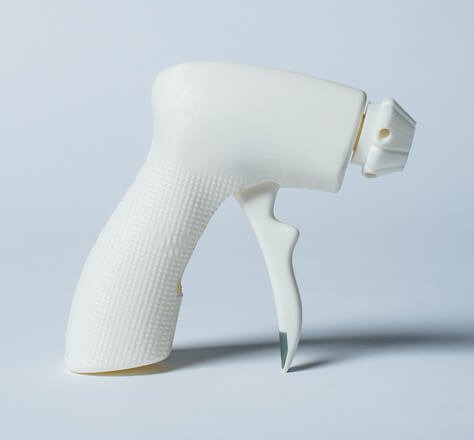Carbon launched Medical Polyurethane 100 (MPU 100), a polymer resin dedicated to its DLS machines. The 3D printing material combines three characteristics essential to components of medical systems, skin-contact devices and single-use medical device applications: mechanical strength, biocompatibility and sterilizability.
A response to the need for medical tools
This launch does not mark the arrival of Carbon in the medical industry. The manufacturer has previously been very active in dentistry and aims at contributing in the production of medical tools that are easy to use and durable enough to withstand the demanding medical environments.
MPU 100 is therefore its solution to produce end-use parts such as complex adaptors for diagnostic analysis systems, textured instrument handles, single use instruments, and bioprocessing components.
Each of these applications brings distinct manufacturing opportunities, such as targeting better user experiences with complex geometries and textured surfaces, consolidating multi-part assemblies into one printed part, and pursuing a more customized portfolio with low-volume, high-mix part production.
“With MPU 100, Carbon is enabling new capabilities for medical device manufacturers by providing the mechanical properties, biocompatibility, sterilization compatibility, and chemical resistance to produce safe and reliable end-use products for patients,” said Jason Rolland, Vice President of Materials at Carbon. “The life sciences and medical device industries show enormous promise for using 3D printing for production at scale, and we will continue to prioritize the development of next-generation materials in this segment.”
For further information, follow us on our social media and subscribe to our newsletter! Would you like to be featured in the next issue of our digital magazine? Or subscribe to 3D Adept Mag? Send us an email at contact@3dadept.com





